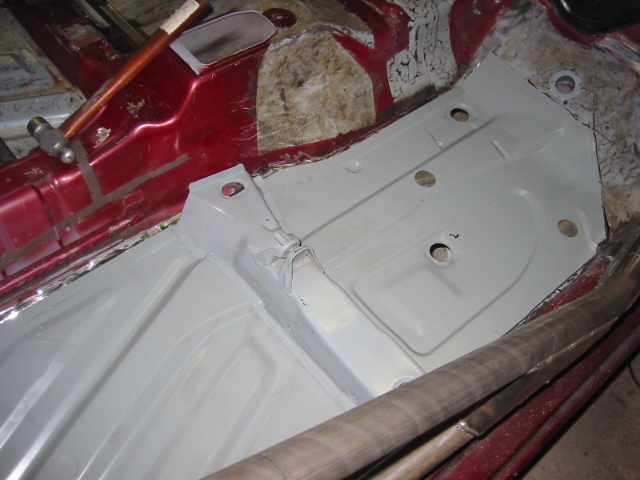Kirk,
Is this piece you are talking about a Bracket for the rear seat back or rear seat bottom cushion(s)? Does it serve any other purpose other than to perform as a bracket for the rear seat back or rear seat bottom cushion(s)? Is it fastened to the chasis of the car to maintain a fixed position using a bolt, nut, screw, or any other type of fastening system which would allow someone to prove that it is not something other than a bracket.
If you answered yes to these questions then it is spelled out very clearly in the ITCS on page 339 section 9.E. that you can remove them and save the weight!
So the catch that everyone is pondering... Is a weld a form of fastening something together or is it then a part of the chasis. If we all agreed that welding was a form of fastening 2 things together then I Think that everyone would agree that in section 9.E. it says bracketry may be removed.
We know that welding something joins 2 peices of metals together but the real question is that different then fastening 2 things together? Since the Definition of a weld (Noun)is A metal joint formed by softening with heat and fusing or hammering together and in a (Verb) is to Join together by heating, as of metals.... then you decide the rest based on Websters fine knowledge and the 1 definition we can use from the GCR.
Definition of a Joint as a Noun: Junction by which parts or objects are joined together.
Definition of a Joint as a Verb (Join): To fasten with a joint
Definition of Fasten (verb): Cause to be firmly attached
Definition of Fastened (Adj.):Firmly closed or secured
Definition of a Fastener(s)(Noun): Restraint that attaches to something or holds something in place
In the GCR it lists: Fasteners - Any mechanism which serves no other purpose than to cause a component to maintain a fixed position (i.e. bolt, nut, screw, etc). The key word here being ETC.
Definition of Attached (ADJ.): Fastened together
So we could go on and on but to me it seems as though a weld securly joins by creating a joint (Same as Fastened from webster) 2 metal pieces (in this case a bracket to the chasis of the car) to hold it firmly in place so that it maintains a fixed position.
If you want SCCA clear answer you could right a check to SCCA for $250 bucks for clarification... Or create lots of headaches, paperwork, appeals and hearings and protest someone for $25

This turned out way more involved than I had ever planned but if I say something I had to back it up I hope I haven't completly bored you and I hope that I saved a bunch of German makes a bunch of weight!

Stephen


 I am impressed, I didn't think there was anyone under 40 that knew what a dictionary was, not to mention how to use one. To use a phrase from my generation, "Right on!", Stephen! Or was that "Right Arm!"?
I am impressed, I didn't think there was anyone under 40 that knew what a dictionary was, not to mention how to use one. To use a phrase from my generation, "Right on!", Stephen! Or was that "Right Arm!"?

